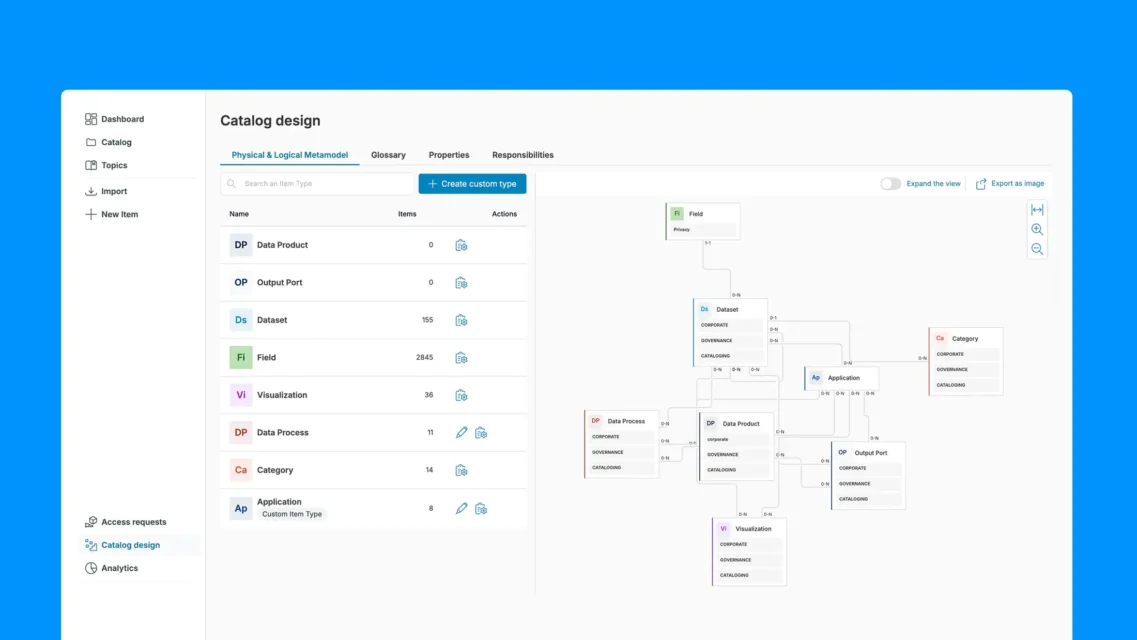In 2026, the proliferation of AI, stricter regulations, and explosive data growth make upgrading legacy metadata management essential to sustain analytics, ensure compliance, and maintain a competitive advantage.
Key Trends Making 2026 a Turning Point for Metadata Management
Several converging forces make 2026 pivotal for metadata transformation. AI integration changes how organizations discover, classify, and govern data assets: AI-driven metadata supports semantic search, enabling retrieval by meaning and context rather than keywords, which boosts discoverability and productivity.
Unified metadata platforms are emerging as enterprises reject fragmented, manual approaches that cannot scale. These platforms collapse silos between technical and business teams, making governance a shared responsibility and aligning metadata with fast development cycles.
Data quality and traceability pressures have intensified under stricter regulations and higher stakes for decisions. Modern metadata systems deliver automated lineage tracking, real-time quality monitoring, and audit trails that manual methods cannot match.
New data types—from unstructured content to AI model outputs—require metadata systems that adapt dynamically. Key trends driving immediate action include:
- AI-powered automation replacing manual metadata creation and maintenance.
- Unified governance platforms eliminating silos and improving collaboration.
- Real-time quality monitoring ensuring data reliability at scale.
- Dynamic schema adaptation supporting emerging data types and architectures.
- Regulatory compliance automation meeting evolving legal requirements.
The Role of AI in Transforming Metadata Capabilities
AI fundamentally reshapes metadata management with intelligent automation, semantic discovery, and adaptive governance. AI-powered systems automate classification, semantic search, and real-time metadata updates, reducing manual overhead and improving relevance.
Traditional systems relied on static, manually created tags that quickly became inconsistent or stale. In contrast, AI-driven systems provide real-time indexing and dynamic adaptation, detecting patterns, relationships, and anomalies that humans might miss to generate richer, more accurate metadata.
| Traditional Metadata | AI-Driven Metadata |
|---|---|
| Static, manual tags | Dynamic, automated classification |
| Keyword-based search | Semantic, context-aware search |
| Periodic updates | Real-time adaptation |
| Limited scalability | Infinite scalability |
| Human-only interpretation | Machine-readable insights |
AI introduces new governance needs—model lineage, training-data provenance, and performance metrics must be tracked—but the efficiency gains are substantial. AI also produces business-friendly descriptions and identifies relevant assets via usage patterns and semantic similarity.
Modern AI-powered platforms extend governance to new asset types such as machine learning models, vector databases, and streaming sources, enabling a single, intelligent interface for the entire data ecosystem.
Why Unified Metadata Platforms are Essential for Modern Enterprises
A unified metadata platform centralizes metadata for all data assets, integrating tools, workflows, and users across hybrid and multi-cloud environments to enable consistent governance and discovery. This solves fragmentation that undermines traditional metadata management.
Enterprises operate in distributed environments spanning multiple clouds, on-prem systems, and SaaS. Unified metadata solutions bridge technical and business stakeholders, reduce redundancy, and create a single source of truth for comprehensive visibility.
Modern architectures rely on federated knowledge graphs that map relationships across locations and formats. Integration with CI/CD pipelines captures metadata automatically as products are developed and deployed, keeping governance aligned with rapid release cycles.
Key advantages of unified metadata platforms:
- Cross-platform visibility into all data assets and relationships.
- Collaborative workflows engaging technical and business users.
- Automated synchronization across diverse systems and tools.
- Consistent governance policies applied organization-wide.
- Centralized data marketplace enabling self-service analytics and discovery.
Siloed approaches produce inconsistent definitions, duplicate efforts, and blind spots; unified platforms provide comprehensive oversight and automated coordination across the data ecosystem.
Improving Data Quality, Lineage, and Traceability Through Metadata
Advanced metadata management enhances data quality, traceability, and transparency by documenting data’s journey from source to consumption. Data lineage reveals how data is created, transformed, and used, enabling stakeholders to understand provenance and impact.
Modern platforms automate lineage tracking and classification, reducing redundancy and operational costs while improving discovery. Automation captures transformation logic, dependency relationships, and impact assessment in real time, giving immediate insight into potential downstream effects.
Automated lineage tracking follows this flow:
- Source identification — Automatically discover and catalog data sources.
- Transformation capture — Record processing steps and business logic.
- Dependency mapping — Identify relationships between assets.
- Impact analysis — Assess downstream effects of changes.
- Quality monitoring — Continuously validate integrity and completeness.
These capabilities are crucial for regulated industries that require full transparency for audits. Automated metadata collection replaces manual documentation with verifiable provenance, transformation rules, and access controls.
Metadata management reduces redundancy, improves discovery, and lowers storage and compute costs by identifying duplicate datasets, unused assets, and optimization opportunities, enabling more efficient resource allocation and better ROI on data infrastructure.
Adapting Metadata Strategies to Evolving Regulatory and Business Needs
Organizations need dynamic metadata systems that adapt to regulatory changes and business shifts like digital transformation and AI adoption. Regulations such as GDPR, HIPAA, and emerging AI governance require metadata that documents provenance, maintains audit readiness, and adapts quickly.
Active metadata management lets organizations respond rapidly by updating compliance documentation, flagging potential violations, and aligning handling practices with current requirements, avoiding slow, reactive processes.
Modern architectures such as Data Mesh and Data Fabric distribute ownership across domains; metadata platforms must coordinate policies across autonomous teams while preserving enterprise visibility and control.
Future-proof metadata strategies should include:
- Regulatory readiness through automated compliance monitoring and documentation.
- Metadata reuse via standardized schemas across use cases.
- Comprehensive audit trails logging metadata changes and access.
- Scalable, cloud-native architectures that grow with demand.
- Integration flexibility via APIs and connectors for emerging technologies.
- Cross-functional collaboration with workflows that engage business and technical users.
Organizations must prepare to govern new asset types—AI models, vector stores, and real-time streams—so metadata strategies evolve alongside technology rather than requiring wholesale replacement.
Risks of Delaying Metadata Management Modernization
Delaying modernization compounds operational, compliance, and competitive risks. Without robust metadata, data silos block analytics, redundant storage grows unchecked, and compliance gaps open organizations to regulatory penalties.
Poor metadata leads to content invisibility, forcing analysts to hunt for information instead of generating insights, slowing decisions and eroding data value.
| Legacy Approach | Modern Approach |
|---|---|
| Fragmented, manual processes | Automated, integrated workflows |
| Slow data discovery | Instant semantic search |
| Compliance gaps | Automated audit readiness |
| Duplicate data assets | Optimized resource utilization |
| Limited AI capabilities | AI-enhanced governance |
Organizations that modernize metadata gain advantages in analytics speed, data quality, and operational efficiency; those that do not fall behind.
The greatest risk may be the inability to leverage AI: AI systems require high-quality, well-governed metadata. Organizations with poor metadata foundations cannot deploy AI reliably, surrendering competitive advantage to better-prepared peers.
How Upgrading Metadata Drives Business Value and Operational Efficiency
Modern metadata management yields measurable ROI through faster insights, better discoverability, reduced redundancy, and lower operating costs. Automated solutions identify issues in real time, preventing downstream problems and shortening troubleshooting.
Business value appears across several dimensions:
Productivity improvements:
- Search-to-find reduced from hours to minutes.
- Higher asset reuse and fewer duplicate projects.
- Automated prevention of data-quality incidents.
- Self-service analytics that reduce IT bottlenecks.
Cost optimization:
- Eliminated redundant storage and reduced compute costs.
- Lower compliance costs via automated documentation.
- Reduced manual governance overhead.
Revenue acceleration:
- Faster time-to-insight enabling quicker business responses.
- Improved analytics accuracy from higher-quality data.
- Enhanced data products and better customer experiences.
Organizations often report 300–500% improvements in discovery speed and 40–60% reductions in data preparation after adopting modern metadata platforms. These gains compound as automated governance reduces ongoing maintenance and improves consistency.
Beyond metrics, unified metadata platforms foster cross-functional collaboration, creating shared accountability for data quality across business and technical teams.
Preparing Your Metadata Infrastructure for the 2026 Data Landscape
A systematic approach ensures metadata investments align with business priorities and scale over time. Follow a staged modernization plan to build a sustainable foundation.
Step-by-step modernization guide:
- Assess Current State — Inventory metadata tools, processes, and governance.
- Prioritize Use Cases — Focus on high-impact scenarios that deliver immediate value.
- Integrate Automation — Implement automated collection and quality monitoring.
- Bridge Business/IT — Establish collaborative workflows and governance committees.
- Embed Compliance — Configure automated compliance monitoring and documentation.
- Scale Gradually — Expand coverage across sources and use cases methodically.
Essential features for a future-ready metadata platform:
| Feature Category | Key Capabilities |
|---|---|
| Automation | Automated synchronization, AI-powered classification |
| Integration | Federated knowledge graph, CI/CD integration |
| Governance | Role-based access controls, policy automation |
| Discovery | Semantic search, recommendation engines |
| Compliance | Audit trails, regulatory reporting |
| Collaboration | Business glossaries, cross-functional workflows |
Breaking down silos and engaging cross-functional stakeholders is critical: metadata transformation requires organizational change alongside technology upgrades. Establish governance committees including IT, business units, compliance, and analytics to align metadata strategy with stakeholder needs.
Success hinges on selecting a platform that grows with the organization and integrates with existing infrastructure. Actian Data Intelligence Platform provides comprehensive metadata management capabilities—automated governance, AI-powered discovery, and unified collaboration tools—to help organizations convert fragmented data into governed, real-time data products.
Request a demo to explore how Actian Data Intelligence Platform meets your specific needs.
FAQ
Use Actian’s API-first contract framework to embed schema validation and data quality checks into your deployment processes, enabling automated governance enforcement at every code commit. The platform supports popular CI/CD tools and offers REST APIs for custom integrations.
Actian logs synchronization failures, alerts data stewards, and rolls back to the last consistent metadata version while preserving lineage history. The platform maintains detailed error logs and diagnostic tools for quick resolution.
Deploy Actian’s lightweight connector agents in each cloud region and on-premises data center, allowing the federated knowledge graph to aggregate metadata while maintaining local data residency. This architecture supports uniform policy application across all environments.
Actian’s decentralized data product framework provides native support for data mesh without architectural compromises, enabling domain teams to own and publish data while applying centralized governance policies.
Track improvements in time-to-insight (typically 50-70% reduction), compliance audit preparation effort (30-50% decrease), and incident resolution time (40-60% improvement). Actian offers built-in analytics dashboards to calculate these metrics and demonstrate governance value.
Common pitfalls include underestimating connector integration complexity and neglecting change management. Mitigate risks through phased rollouts starting with high-value use cases, stakeholder engagement, and realistic timelines. Focus on quick wins with critical datasets before expanding enterprise coverage.
Poor metadata creates silos, slows decisions, wastes resources on duplicate data, increases compliance risk, and produces unreliable AI outputs due to missing context and provenance.
Modern metadata systems provide automated compliance monitoring, comprehensive audit trails, and lineage documentation, enabling rapid updates to rules and verifiable records for audits.





